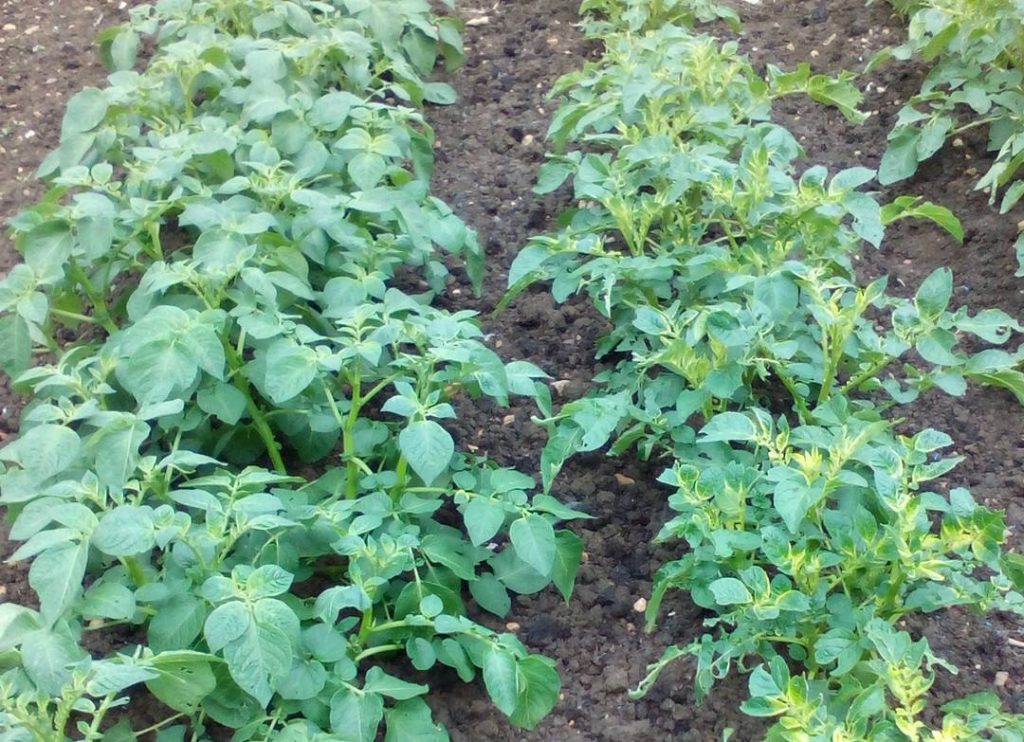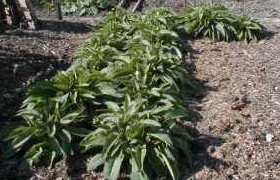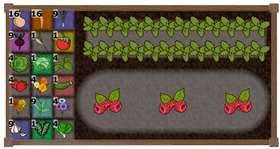Aminopyralid is a persistent, selective herbicide that has caused gardeners in the UK no end of problems. Entire crops have been lost and plots taken out of production for a year or more.
The problem was first noticed back in 2008 when people started seeing their crops fail as if they had been sprayed with weedkiller. Initially it was put down to spray drift or even vandals but eventually a link with using manure was noticed.
Some detective work followed and it was shown that many farmers were using a new type of selective weedkiller to get rid of weeds like thistles from pasture. The weedkillers contained a substance called aminopyralid that was very efficient.
This weedkiller bound to the lignin in grass, which did the grass no harm. Then the cow or horse or sheep would eat the grass. Once in their stomachs, the grass broke down and the aminopyralid was released. The animal would then excrete the aminopyralid and this would sit as a hidden poison in the manure.
Well I ranted on about it as did other gardeners and the national press picked it up, so the product was withdrawn by the end of July 2008. Result! Except it wasn’t.
In August 2009 aminopyralid was back on sale except this time it had better instructions and warnings about using manure from animals fed on sprayed grass.
If they had kept aminopyralid off the market, it would have degraded in manure and by 2013 manure would be safe but it’s a problem we’re never going to be free from now.
So it was with a sinking feeling I looked at the photo above that was emailed to me asking what was wrong with the potatoes. I checked and the answer was yes, the plot had had a good application of manure.
So – aminopyralid is still around, you need to be careful when getting manure for the plot.
See the following posts in this diary:
Aminopyralid Herbicide Residue in Manure Killing Crops
Testing For Aminopyralid in Manure
What to do if you have Aminopyralid Contaminated Manure





We at Torbay Organic Gardening Society have been trying to obtain organic straw for the paths of our raised bed allotment without success. We have found various straw bale suppliers, but none that will guarantee that the straw has not been sprayed with persistent herbicides such as aminopyralide and clopyralid.
At my allotment just outside of Wedmore Somerset, it was about 7 years ago we also had trouble growing our potatoes. At first I thought it was blight but then other large leaf plants were also effected. It was only about 18 months later that we found out that it was to do with this weed killer. The manure was still deadly even after 5 years and during that time I also set fire to it. Did it do any good ? NO ! Only 2 days ago I had to dig up a potato plant with withered leaves, this could still be due to this weed killer !
Question on Aminopyralid.
Are we safe using the bags of manure sold by the manufacturers of fertilisers for example such as Arthur Bowers.
I would like to say that from the pic I do not think this is Aminopyralid. Yes I hate the stuff, suffered badly, But there was no paling of the leaves, they were curly.
I now never bury manure but put it between the rows on the surface. It breaks down better that way, and can be removed in case of problem. Personally think this might be frost damage affecting one variety more than others.
HB – we’re pretty sure it is because those potatoes were planted at the same time, same variety, same batch even and the rows where the manure had run out were good.
Sorry but they simply do not look like Aminopyralid damage. Look for picture of potatoes and aminopyralid.
I hate aminopyralid but that is not what the problem looked like.
The damage in the photo has not been caused by aminopyralid or clopyralid. It looks more like sulfonylurea herbicide damage, which has affected the growing point of the potatoes in your photograph.
Potato plants affected by aminopyralid or clopyralid produce curled stems with very little leaf and resemble bracken fronds.
You may be right David but if you check out the pictures on this post Aminopyralid Herbicide Residue in Manure Killing Crops you can see they do indeed look like bracken where badly affected.
So can we have an answer to the question is shop bought bagged manure safe?
I wish we could. Even bags from the same manufacturer can vary. I’m told that they’re very aware of the problem in the USA and some if not all of the compost manufacturers test and use trusted sources for raw materials.
The gardening Facebook site, that I belong to reccomends everybody checks their shop bought potting compost and manure for Aminopyralid, by growing some beans in a pot, before using. Many, many people have come across it in compost.